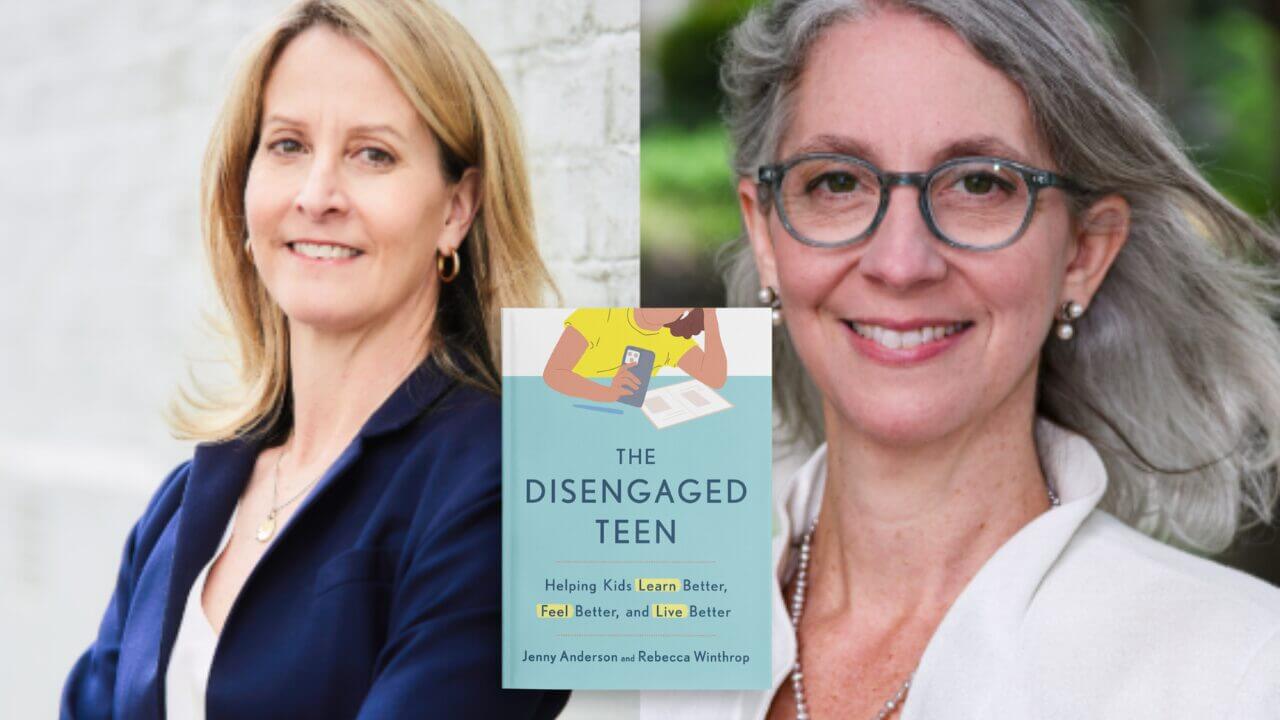Engaging Families, Empowering Students: A Conversation with Learning Heroes CEO Bibb Hubbard

Dive into this conversation with Bibb Hubbard, founder and CEO of Learning Heroes, as she explores the critical role of family-school partnerships in fostering student success. Bibb, who has spent her career at the intersection of education policy, advocacy, and parent engagement, launched Learning Heroes to support and equip parents in advocating most effectively on behalf of their children’s learning and wellbeing. To meet parents where they are with actionable information and resources, Learning Heroes has conducted an unprecedented amount of parent mindset research. Bibb also serves on the Carnegie Expert Workgroup to guide the co-creation of our research and development agenda to transform U.S. high school education.
In this Q&A, Hubbard shares key findings on family perceptions and academic achievement, how communities can work together to support student growth, and the critical moment for family engagement in high school. She also discusses what’s next for research at Learning Heroes and the policy shifts needed to ensure every parent has the knowledge and resources to help their child thrive.
What inspired your focus on parent advocacy and research, and what pivotal experiences led you to launch Learning Heroes?
I come to this work through the lens of policy, politics, communications, and advocacy. I started my career in national politics, working on Democratic presidential campaigns, the Democratic Congressional Campaign Committee, the Senate, the White House, and the Department of Labor, but three key experiences led me to Learning Heroes. First, as a public school graduate and mom of two, I’ve experienced firsthand the power communities play in supporting student success. Second, my time at Scholastic reinforced the importance of integrating families into every decision. Third, while working at the Gates Foundation, I kept asking, “What is our plan for engaging families in our strategy?” which led me to focus on this work with philanthropic support.
Early on at Learning Heroes, our research found that almost nine in ten parents think their child is at or above grade level. Meanwhile, only 30% of 8th graders nationally demonstrate proficiency or above in math and reading. While this illustrates how much there still is to do, based on our work and research, when families are seen, heard and invited in, the results for kids, schools and communities will follow.
What are you most excited about over the next 12 to 24 months at Learning Heroes?
We’ve been at this work for nearly a decade. What excites me most now is the clarity we’ve gained: we can’t just support families in isolation to move the needle. We must consider what’s happening inside school buildings, and if there ever was a need for meaningful communications with families, it is now. We focus on three key areas:
- Building educator capacity – Many teachers consistently report not feeling equipped or trained to engage with families effectively, so we support schools in making this a core part of student success.
- Championing parents – Caregivers rely on communications with their child’s teacher and report cards to gauge progress. We strengthen families’ ability to most effectively navigate and advocate for their child’s success through parent awareness and action campaigns, like GoBeyondGrades, and research-based, parent-friendly resources like the Readiness Check, the Parent Teacher Planning Tool, and Paths to Success, among other helpful supports.
- Enhancing research and policy – We contribute to the national conversation by enhancing the evidence base around the role of families and educators in student success and by lifting up parents’ voices and needs.
Why is meaningful family and educator engagement particularly important now?
If COVID taught us anything, it’s that people need human connection. Students need to be in school with caring adults who create a sense of belonging, and families need that sense of community, too.
Given today’s societal polarization and silos, this work is more urgent than ever. When relationships between schools and families are strong, tough conversations become possible. Parents trust that schools have their child’s best interests at heart, and schools trust that parents are doing their best, too. With this approach, we believe schools can experience a range of improved outcomes—reduced chronic absenteeism, higher tutoring uptake, increased achievement rates, increased educator retention, stabilized enrollment, etc. This is why I find Carnegie’s high school transformation project so exciting—rethinking what happens inside school buildings and reconsidering who supports student learning is essential. Families are often left out of the equation, which makes no sense because there is a critical role for them to play at the high school level. This is why we are working in multiple states to promote data transparency, train teachers to engage families in conversations about student progress, and equip principals with the mindsets and tools to foster engagement.
Could you share an example from the past few years that makes you optimistic about the future of family engagement?

At Learning Heroes, our Family Engagement Leadership Institute helps principals develop family engagement plans directly connected to their school goals. Demand is growing–we started with 25 schools three years ago, and now we’re working with 75 schools. One standout is Barb Lange, principal of rural Storm Lake Elementary in Iowa. After participating in the program, she implemented home visits, targeted teacher PD to address chronic absenteeism, and shifted the focus of open houses from the traditional teacher-led model to listening and building meaningful trust with families. As a result, the school reduced its chronic absenteeism rate from 30% in 2022-2023 to 15% the following year.
Another example is Andrew Granias at the New City Charter School in Minneapolis. He has transformed their approach to family engagement by focusing on math proficiency. He worked with a few teachers to build their confidence for these sometimes difficult conversations with families. Early indications show that student math performance is rising in classrooms where teachers have been trained, and Granias is now expanding this work to a whole-school strategy by leveraging the leadership of the first cohort of teachers.
Have you heard consistent themes from families about the aspirations for their children’s high school experiences, whether they’re in Minneapolis or a rural town in Iowa?
Across the board, parents—especially at the high school level—want their children to graduate prepared for life. They want them to develop real-world skills that allow them to navigate life independently and thrive. Of course, they also want them to have strong foundational skills in reading and math too. And this is where things get tricky. Our research shows that 91% of high school parents believe their children are reading and doing math at or above grade level. That assumption makes sense—after all, if their kids have made it to high school, they should have those skills. Unfortunately, that’s not always the case, and the gap becomes even more urgent at this stage, as there’s less time to address it.
At the end of the day, parents prioritize foundational academic skills, but they also expect schools to reinforce and support their children’s development in communication, organization, teamwork, and empathy throughout the curriculum. Of course, school safety remains a top priority for families everywhere.
Why are real-world skills important to families in addition to academic content knowledge? Do parents’ expectations shift as their kids enter high school and prepare to launch into the world post-graduation?
While the education field tends to silo academic knowledge, skills, and social-emotional learning, parents see all of these things as connected. Parents know that their child needs to be in a good place socially and emotionally to be successful academically. Their well-being is the foundation, and everything else builds from there.
This becomes especially clear in high school. As kids grow, they seek more independence, and parents navigate that shift. By high school, parents want to ensure their child is prepared to navigate the world on their own, but they don’t separate that from academics. They expect their child to develop real-world skills—like communication, teamwork, and problem-solving—through subjects like civics, science, math, and English, as well as extracurriculars like drama or sports. Families want skills to be integrated rather than treated as separate from academics. Their focus isn’t on whether their child is learning durable skills in isolation but whether they’re gaining the full set of knowledge, competencies, and experiences that will help them succeed. Through the high school transformation process, I hope we can encourage breaking down silos. Too often, I hear people discussing durable skills as if they exist apart from academic learning. The reality is that families don’t separate these things in their thinking, and I don’t think we, as a field, should either.
How have you seen parents and families recognize the value of out-of-school learning in your research?
Thanks to the Wallace Foundation and Karen Pittman, we did a study on out-of-school learning a few years ago, and the findings were really interesting. Parents highly value these opportunities for their children and see them as critically important. The families who aren’t engaged often face barriers like financial constraints, lack of transportation, or simply living in rural areas where such opportunities aren’t available. Parents and teachers alike see the benefits of out-of-school learning. Our qualitative and quantitative research showed that students involved in extracurricular activities tend to be stronger students overall.
There are two main reasons for this. First, students engage in out-of-school activities by choice, which means they take ownership of their learning. Unlike in school, where they follow a set curriculum, these activities let them explore their passions, take risks, and build relationships with peers who share their interests. A sense of belonging and purpose is powerful and not something students necessarily get in class. Second, students involved in these activities develop skills that translate into academic success. They learn time management, discipline, and resilience—skills that help them juggle responsibilities inside and outside the classroom.
Given your policy background, what policy levers do you think could really move the needle on meaningful family engagement?
There are a few policy levers we are contributing to and pushing the field on, including:
- Teacher preparation – Schools of education should incorporate a dedicated curriculum on family engagement, exploring how educators can connect with families in culturally affirming ways. One of our longtime partners, NASFCE, is starting to build a pedagogy around this, which is exciting, and I see it as a major lever along with accreditation—imagine if for a school of education to get accredited, they had to have a solid family engagement component in their training.
- Curriculum integration – When curriculum providers develop teacher guides and student guides, they could also create parent guides or materials for out-of-school-time providers. The challenge is that unless district leaders demand these changes, vendors likely won’t integrate family engagement as a core component.
Yet here’s another layer to the challenge—many district leaders see parents as a threat, especially in today’s polarized climate. That’s heartbreaking because it doesn’t align with what parents want. When we ask parents what they would do if their child’s school received a D or an F, most say they would talk to the principal and see how they can help the school improve. About 30% say they would look for another school. While many district leaders and principals have different perceptions, shaped by media narratives, I’ve been encouraged by bold leaders who are bringing families into their school’s goal setting.
Are there other myths to challenge about the perception of parental and familial involvement in education?
One persistent myth is the notion that low-income parents don’t care about their children’s education just because they don’t attend parent-teacher conferences. These meetings are often scheduled at inconvenient times, are only 15 minutes long, tend to run late, and if a translator is needed, families could be waiting an extra two hours. If a child is getting a B, why would a parent miss work or skip a basketball game for a low-value interaction that tells them everything is fine? The assumption that low-income parents do not care about their children’s education is not only false but also damaging.
Another related myth is about post-secondary aspirations. While interest in college has declined recently, Black and Hispanic families are the most bullish on their children pursuing a two- or four-year degree—more so than white families. This often surprises people, but it shouldn’t because education has long been seen as a pathway to economic and social mobility, particularly for historically marginalized communities.
Finally, there’s the misconception about academic proficiency. As I shared earlier, nine out of ten parents believe their child is at or above grade level, but in reality, only about half of students are. This perception cuts across race, income, and education levels. Parents assume that good grades mean their child is on track, which is understandable when 80% of them report their child brings home mostly B’s or higher. Breaking down these misperceptions requires intentional relationship-building.
Are there other pressing family engagement questions or data points needed by the education field that Learning Heroes is looking to explore next?
We are in Phase 2 of an impact study with TNTP, examining the relationship between strong family engagement and a range of student and school outcomes, including chronic absenteeism, test participation, teacher retention, principal retention, enrollment stability, and tutoring participation.
In Phase 1, we looked at Illinois’ statewide data, finding that schools with strong family engagement pre-pandemic experienced significantly lower rates of chronic absenteeism, better attendance, increased test-taking rates, and even slightly improved achievement rates in math and reading post-pandemic compared to schools with weak family engagement.
Now, we are diving deeper into what drives success, gathering insights from students, teachers, families, guidance counselors, and principals to strengthen engagement as a key strategy for important school and community outcomes.
January 22, 2025
Explore this insightful Q&A with award-winning journalist Jenny Anderson and global education expert Rebecca Winthrop as they discuss the evolution of education reporting, the transformative power of family-school engagement, and what parents can do to ensure their children thrive. Anderson, who spent over a decade at The New York Times…
January 10, 2025
“Learning is least useful when it is private and hidden; it is most powerful when it becomes public and communal. Learning flourishes when we take what we think we know and offer it as community property among fellow learners so that it can be tested, examined, challenged, and improved before…







